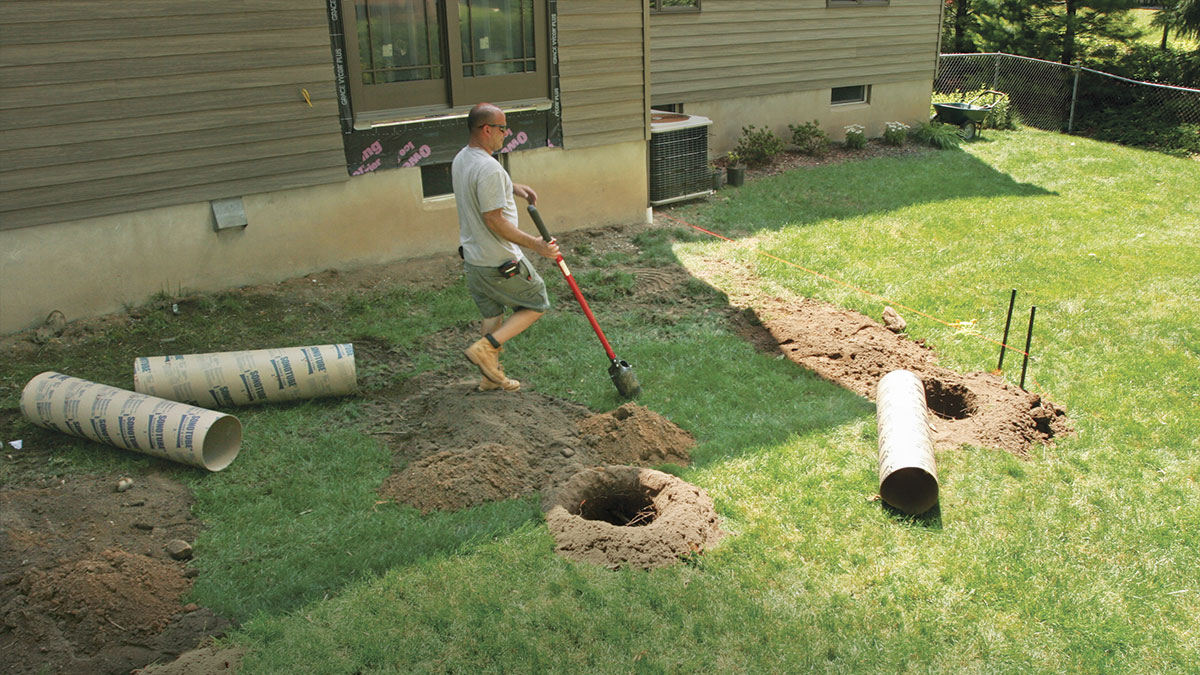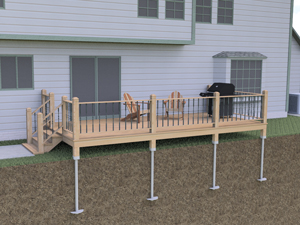Picking the Right Deck Footings for Security and Resilience
When it comes to building a deck, among one of the most essential decisions you will make is picking the appropriate footings for stability and durability. The longevity and safety and security of your deck depend heavily on the kind of footings you select, as they give the necessary assistance and security to withstand the test of time. With a myriad of options available, it can be frustrating to identify which grounds are best fit for your certain demands. In this conversation, we will explore the different types of deck footings, think about the essential factors to consider when deciding, and look into the advantages and disadvantages of different alternatives. By the end, you will certainly have a clearer understanding of the options handy and be far better geared up to make a notified choice for your deck project.
Sorts Of Deck Grounds
These footings are composed of a cylindrical hole loaded with concrete, which offers a solid structure for the deck blog posts. Concrete pier footings are reasonably easy to mount and provide superb stability, making them a prominent selection for many deck tasks.
These grounds are set up by screwing them right into the ground, which produces a safe and secure structure for the deck. They likewise enable for simple modification and progressing of the deck if needed.
Conversely, some building contractors opt for precast concrete grounds. These grounds are constructed from long lasting concrete and be available in different forms and sizes to suit different deck designs. Precast concrete footings are hassle-free to install and provide a steady base for the deck structure.
Finally, one more choice is the post-in-anchor footing system. This kind of footing includes driving a metal support right into the ground and connecting it to the deck message. It supplies versatility in terms of placing the deck articles and is suitable for decks with light-weight frameworks.
When choosing the ideal type of deck ground, it is crucial to think about elements such as dirt conditions, deck tons, and neighborhood building codes (Deck Footings). Consulting with an expert contractor or structural designer can assist ensure the appropriate footing is selected for a secure and stable deck
Aspects to Take Into Consideration When Choosing Footings
When choosing the ideal footings for a deck, it is vital to very carefully consider different aspects such as dirt problems, deck lots, and adherence to regional building ordinance. These factors play a considerable function in making sure the security and resilience of the deck structure.
One of the main elements to consider is the dirt problems. The kind of soil on which the deck will be built figures out the kind of grounds called for. Decks built on sandy or loose dirts might need deeper footings to supply sufficient support and prevent settling. On the various other hand, decks developed on clay or extensive dirts might need footings that can fit the soil's tendency to broaden and agreement.
Another vital aspect is the deck tons. The weight of the deck, including the products utilized and any kind of potential live lots such as furnishings or gatherings, must be taken into consideration when choosing grounds. The grounds have to be made to birth the weight of the deck and distribute it evenly to avoid any type of structural concerns or failures.
Last but not least, adherence to regional building ordinance is critical. Building ordinance vary from region to area, and it is necessary to comply with the specific needs established by the regional authorities. Deck Footings. These codes make sure that the deck is built securely and fulfills the required requirements for architectural integrity and load-bearing capability
Concrete Grounds: Pros and Cons

Concrete grounds use numerous benefits and negative aspects when utilized as the foundation for a deck. On the favorable side, concrete footings provide exceptional security and resilience.
One more benefit of concrete grounds is their versatility. They can be poured into different shapes and sizes to accommodate various deck layouts and setups. Concrete grounds can be tailored to fit the certain demands and needs of the deck structure.
Nonetheless, there are also some disadvantages to using concrete grounds. One significant negative aspect is the cost and labor associated with their installation. Concrete grounds find more information call for excavation and often require the aid of hefty equipment. This can raise the total price of the deck task and might require specialist support.

Helical Piers Vs. Sonotubes: Which Is Better?
In thinking about the structure alternatives for a deck, the contrast between helical piers and sonotubes is important in figuring out the remarkable option. Helical piers, additionally referred to as screw stacks, are steel shafts with helical plates connected to them. They are twisted into the ground using hydraulic machinery, providing a resilient and secure structure for the deck. On the other hand, sonotubes are round types made of cardboard or fiber material that are loaded with concrete. They are placed in a hole explored the ground and give support for the deck.
When it pertains to security and durability, helical piers have the top hand. The helical plates on the piers create a solid hold with the dirt, moving or stopping any movement of the deck. This is especially helpful in locations with unpredictable or changing dirt problems. Sonotubes, on the various other hand, depend exclusively on the concrete filling up for stability, which may not offer the same level of stamina and resistance.
In terms of setup, helical piers are fairly easier and faster to set up contrasted to sonotubes. The hydraulic machinery made use of to twist the piers into the ground makes sure a quick and reliable procedure. Sonotubes, on the various other hand, call for digging holes and pouring concrete, which can be taxing and labor-intensive.
Additionally, helical piers are a more versatile option. They can be used in various soil conditions and can be readjusted or enhanced if required. Sonotubes, on the other hand, might call for additional assistance, such as rebar, in particular soil conditions or areas with high lots needs.
Choosing the Right Footings for Your Deck's Dimensions
For ideal architectural honesty, it is necessary to very carefully choose the proper reference footings that straighten with the measurements of your deck. The dimensions of your deck, including its length, size, and elevation, play a considerable duty in figuring out the type and dimension of grounds called for.
When picking footings for your deck, it is essential to consider the load-bearing ability of the soil. The weight of the deck, integrated with the weight of any kind of furnishings or individuals on it, applies a significant force on the footings (Deck Footings). For that reason, it is crucial to select grounds that can sufficiently sustain this weight without changing or sinking in time.
The dimension and shape of the footings must likewise be considered. Larger decks with greater dimensions call for bigger grounds to offer enough stability and assistance. The form of the footings, whether they are square or round, relies on the design and design of the deck. In addition, the deepness at which the footings home are set up need to be determined based on the frost line in your region to avoid any kind of heaving or shifting as a result of freezing temperatures.
Conclusion
In final thought, choosing the best deck footings is crucial for ensuring security and durability. Variables such as the kind of footings, the deck's dimensions, and the pros and cons of different alternatives need to be considered.
These footings consist of a cylindrical opening filled up with concrete, which provides a strong foundation for the deck articles. Concrete pier grounds are relatively easy to install and offer outstanding security, making them a prominent choice for numerous deck projects.
Precast concrete grounds are hassle-free to install and supply a stable base for the deck structure.
It provides adaptability in terms of positioning the deck articles and is appropriate for decks with light-weight frameworks.
Concrete footings use a number of advantages and drawbacks when used as the foundation for a deck.